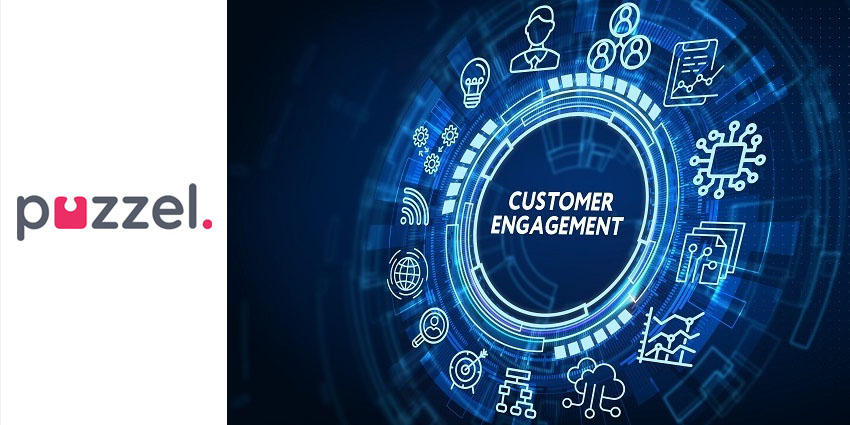Emerging technologies, evolving customer attitudes, and new CX theories are challenging many preconceptions of digital customer engagement.
“Customers will readily adopt new engagement channels if we promote them.” Many customers will revert to the channels that they are most comfortable with.
“We must eliminate customer dissatisfaction across the entire customer journey.” Not necessarily, as a more emotionally stimulating experience is often more memorable.
“By becoming more proactive, we will seize a new opportunity for positive engagement.” Recent Gartner research summarized that “flawed proactive customer service does more harm than good.”
Avoiding these traps is tricky, especially when such customer engagement myths are widespread.
Luckily, a recent Puzzel webinar shared the thoughts of two CX experts with their fingers well and truly on the pulse. They were:
- Alexander Michael, Vice President of Information and Communications Technology at Frost & Sullivan
- Jeremy Greenwood, Sales Engineer at Puzzel
Digging deep into many recent CX studies, the duo discussed the current state of customer engagement, pinpointing many critical trends that are changing the field. Here are five of the most thought-provoking examples.
1. Digital Intensity Changes Customer Thinking
In unravelling recent Frost & Sullivan research, Alexander concluded: “Consumers are more impatient and anxious, but also more thoughtful and selective in their decision making.”
What is fuelling this trend? In part, digital intensity.
Since the pandemic, digital intensity has accelerated in numerous aspects of consumer lives. In Germany alone, the analyst found that companies have pushed digital engagement strategies forward by 6.4 years.
As such, customers are becoming more familiar with quick, online solutions to simple queries. Indeed, 69 percent of customers are now willing to interact with a bot to solve their problems, perhaps creating a new expectation for immediacy.
Yet, there is also easy access to alternative options, with a third of consumers discovering new brands online after the onset of COVID-19. The result is a more thoughtful, autonomous customer.
To engage this customer, embracing AI to support customers is a strategy that will likely gain momentum. Yet, empowering agents with tools such as agent assist and competitor analysis is another. These will add to the persuasion capabilities of human agents and help turn the decision-making process in the company’s favour.
2. Practical AI Applications Come to the Fore
42% of British companies plan to invest in conversational AI and self-service to lower inbound contact volumes and support customer service agents. As a result, it is the second most significant investment priority – only behind unified communications.
In Germany, it is the greatest priority, with 52% of organizations planning to invest in the technology.
Such an acceleration suggests that customers are becoming more receptive to the technology. The following statistics support this notion:
- 87 percent of customers expanded their use of digital channels as a result of the pandemic.
- Automated channels are the first choice for customers under 25 years old.
Yet, the practicality of implementing these solutions is also increasing. As a recent Opus Research study suggests: “If you can play a videogame, you can build a bot.”
What’s more, it is not just bots that have become easier to deploy. According to a Harvard Business Review article, more companies are successfully implementing “low-hanging fruit” use cases for customer engagement AI. It states:
Ambitious moon shots are less likely to be successful than “low-hanging fruit” projects that enhance business processes.
Perhaps the following statistics exemplify the rise of these practical use cases, with many British companies investing in various other AI applications. These include:
- 38 percent have invested in speech recognition technologies (such as speech analytics software and voicebots).
- 30 percent have invested in sentiment analytics to measure customer emotion.
- 25 percent have invested in robotic process automation (RPA)
Growing confidence in such AI technologies, paired with increasing ease of use – thanks partly to the rise of low-/no-code tools – will continue to change digital engagement plans.
3. The Home Becomes a Work, Entertainment, and Welfare Hub
Hybrid working is now very much the norm, with Frost & Sullivan research highlighting that only three percent of British and German companies expect to have their full workforce in office by 2023.
Such a pattern can offer a better work-life balance. Yet, spending more time at home risks social isolation, with many employees finishing work and immediately playing online games, interacting on social media, using streaming services, and maybe heading into the metaverse.
This increased penetration of immersive technologies plays a part in why one Washington Post article concludes that hybrid work is “messy and exhausting.”
If the principle of happy employees = happy customers is anything to go by, such a working environment is not conducive to excellent customer engagement.
To counteract this, Alexander suggests that more businesses are considering employee homes as work, entertainment, and welfare hubs. In line with this change in hybrid thinking, he also predicted:
“The remaining offices will be creative centres, far more than just productivity centres.” In turn, remote work will become “characterized by productivity and efficiency.”
If companies can create such an environment – while ensuring that employees can harmonise their working and private lives – businesses can build a much more tactful hybrid working strategy.
4. Digital Fatigue Ruffles Feathers
Digital fatigue refers to the exhaustion and disengagement many consumers now face, thanks to the rise of digital devices, apps, and services.
Brands can counter this effect on their teams by supporting employees to create work, welfare, and entertainment hubs. Yet, this phenomenon will also impact customers.
Frost & Sullivan research delves deeper into this concerning trending, uncovering:
- Between a third and half of European consumers – across all generations – have experienced digital fatigue.
- The youngest generation (Gen Z) is over twice as exposed to digital fatigue than older generations.
These findings suggest that lowering digital customer effort is growing increasingly crucial. Yet, so is maximizing the human factor in CX.
Some stalwarts of the banking industry – a sector plagued by a plethora of new digital disruptors – are doing this well, pooling their teams together to emphasise the human factor in CX.
Yet, agent support technologies are also becoming crucial. Leading CCaaS vendors such as Puzzel recognize this, according to Greenwood. He stated:
We are always working to improve agent empowerment with more personalised AI-assistance, enhanced knowledge base capabilities, alongside gamification and employee recognition software.
By harnessing such technology, brands can create human-to-human connections that are more memorable and streamline digital interactions.
5. Increasing Handle Times Challenge Contact Centres
Across all channels, only eight percent of UK contact centres recorded drops in average handling time (AHT) in 2020, compared with 42 percent that witnessed a significant surge in the metric.
Debating the causes of this concerning trend, Alexander said:
There are training challenges when agents are working from home. But, what this research shows is that contacts are becoming more complex.
As a result, he recommends: “We have to remove some of the workload from agents, so they can focus on the things that matter, like providing an empathetic experience.”
In tandem with this concerning statistic, 60 percent of contact centres also reported higher contact volumes in 2020 than in the previous year. Consequently, these operations are busier than ever.
As such, expect digital deflection technologies come to the fore – such as voicebots. Yet, these will not force customers down particular communication routes. Instead, strategies will likely become much more sophisticated.
Take the voicebot example once more. The technology can self-serve many customers while offering an easy escalation path. It may also route more complex queries to the most appropriate agent.
Tips and Tidbits to Take Away
Alongside the wealth of digital customer engagement insights shared above, Alexander shared five following tips and tidbits for those looking to redefine customer engagement.
- Develop proactive, asynchronous, and persistent customer journeys in line with the customer’s digital day.
- Redesign customer journeys and complement them with intuitive, simple self-service tools.
- Rethink strategies and business models, AI and analytics – critical elements to improve CX
- Accept that digitalization is the new normal, but personalization is the true differentiator. Continually evolve the digital experience.
- Empower employees, focus on EX and CX, and be effective rather than just efficient.
Puzzel supports its customers in meeting each of these goals, with Frost & Sullivan praising the vendor for its conversational AI platform, agent-assist applications, and intuitive interface.
In doing so, the market analyst named Puzzel a top five CCaaS vendor in its 2021 European CCaaS Radar report
To find out more about how Puzzel can support your digital customer engagement strategy, visit this page.







